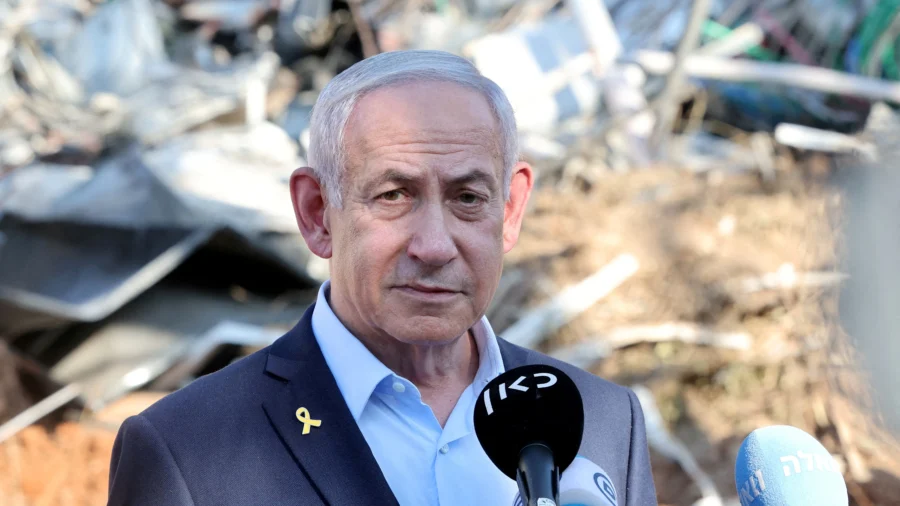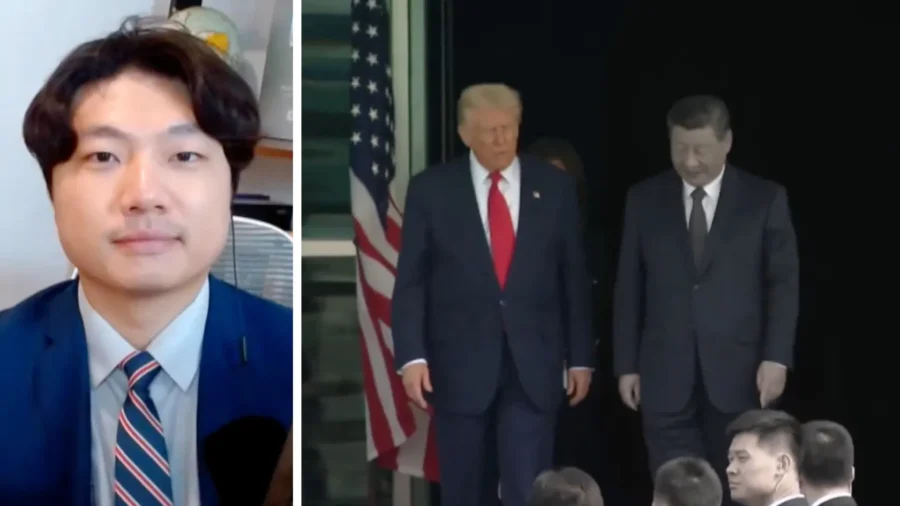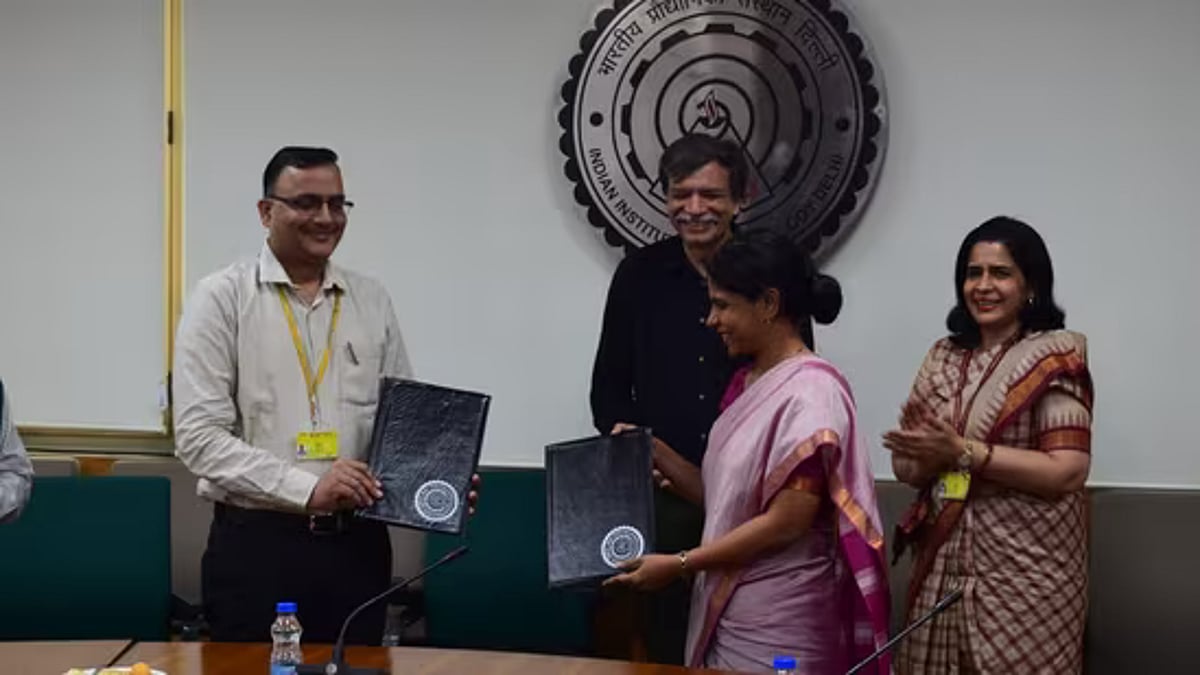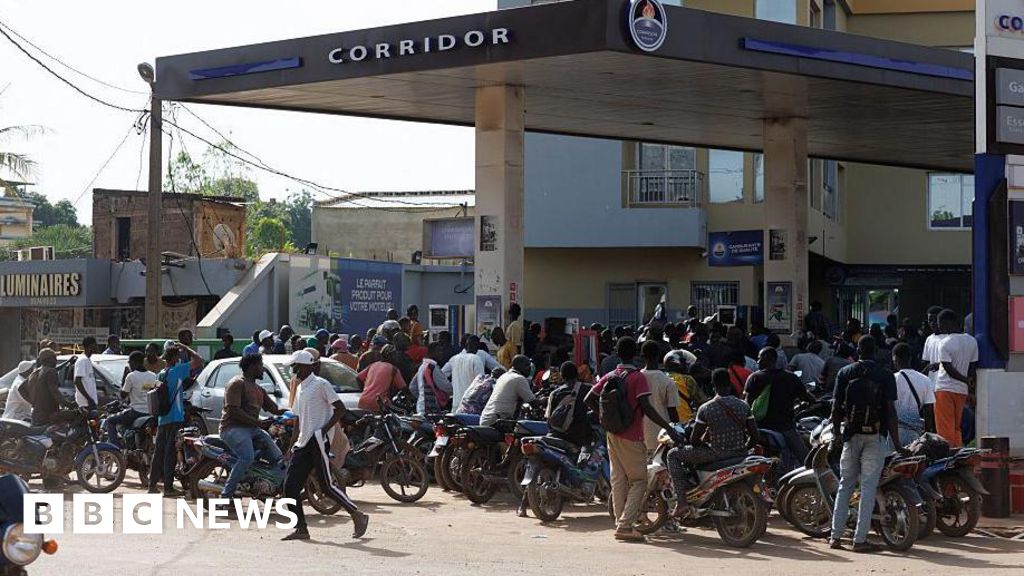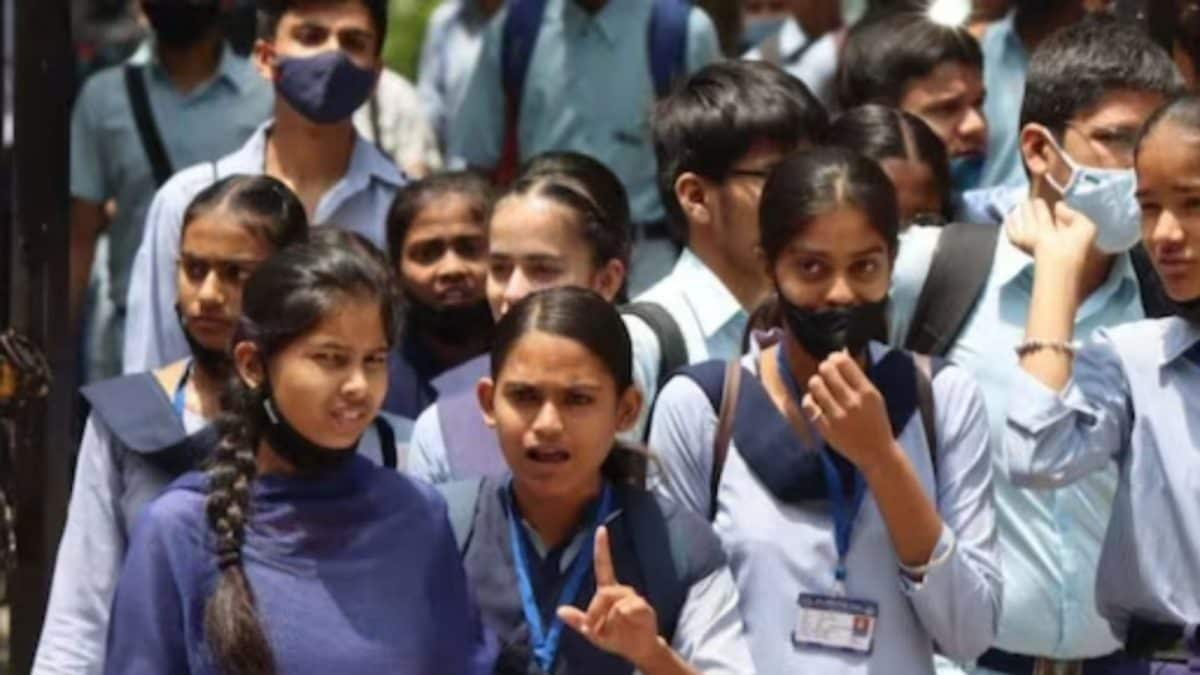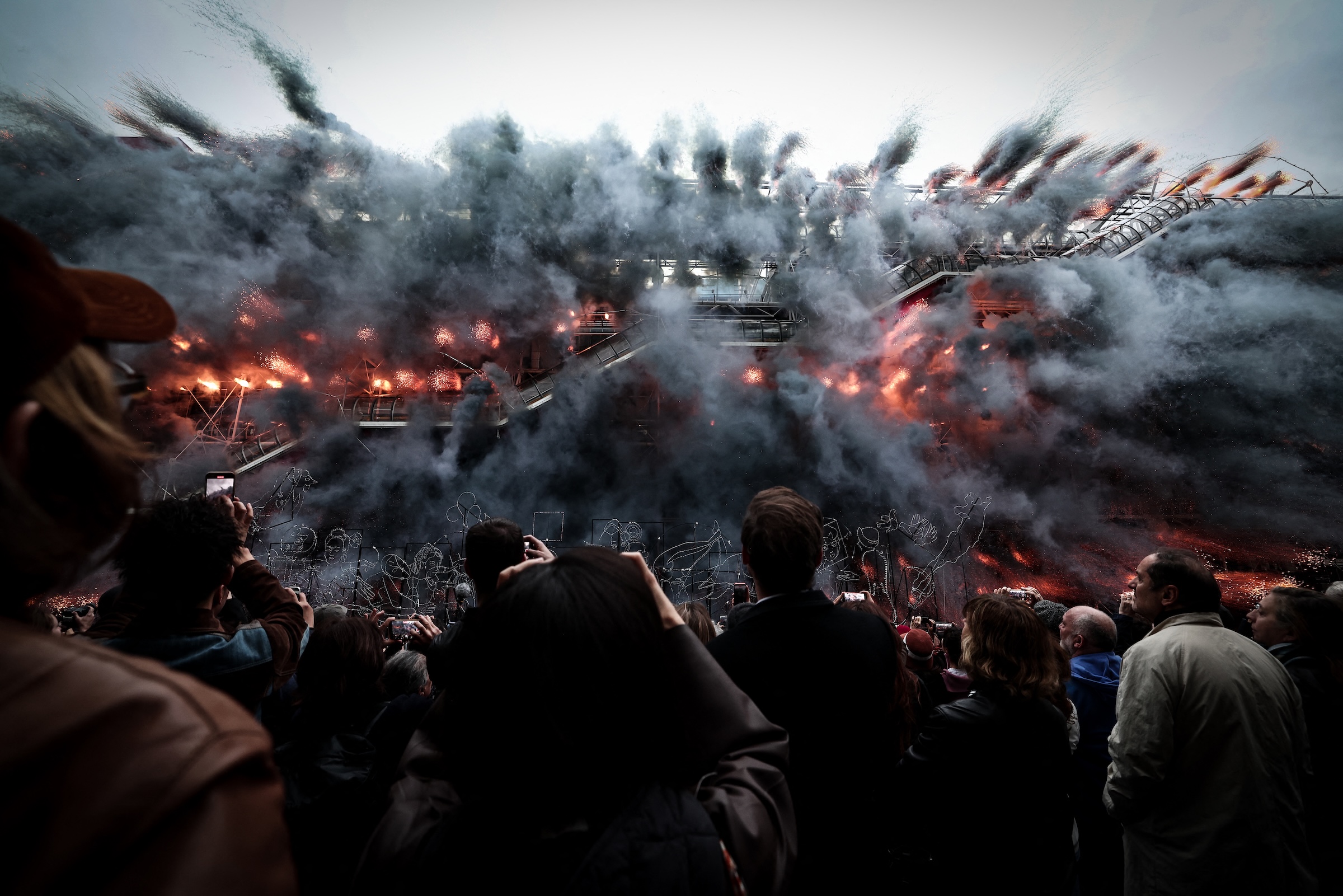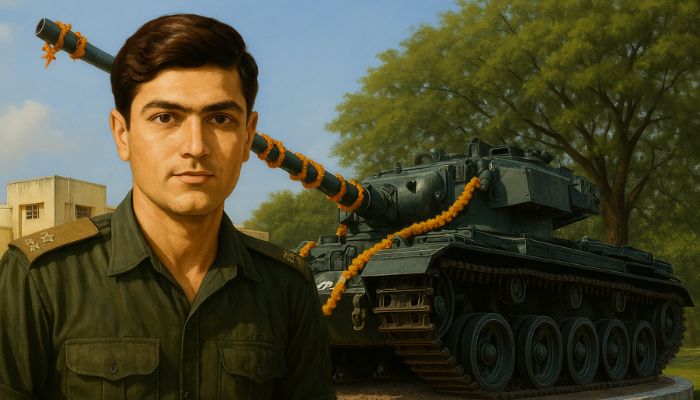120 Indian soldiers fought Chinese military in freezing temperatures: Read about the Rezang La battle that inspired film ‘120 Bahadur’, and why Ahir community is protesting
Recently, actor-producer Farhan Akhtar’s upcoming film “120 Bahadur” got embroiled in a major controversy. On Sunday (October 26, 2025), hundreds of members of the Ahir community took out a massive protest march on NH-48 against the film. The protest led by the United Ahir Regiment Front resulted in a kilometre-long traffic jam. Protesters believe the film’s title, ‘120 Bahadur,’ does not accurately portray the sacrifice and unique identity of these 120 brave Ahir soldiers. The movie is based on the Battle of Rezang La Pass in Ladakh, a legendary saga from the 1962 India-China War. In this battle, 120 Ahir soldiers of ‘C’ Company of the 13th Kumaon Regiment displayed extraordinary bravery and risked their lives. The protestors are demanding that the movie’s name be changed to “120 Veer Ahir” to accurately reflect the community’s unique contributions. They threatened that it the name of the movie is not changed, they would not allow the film to be released in all states, including Haryana, where majority of the Ahir community resides. The movie and this protest has once again brought the historical and emotional story of Rezang La into national focus. India-China War 1962: Strategic Importance of Rezang La The 1962 Sino-Indian War is a painful chapter in Indian history, but the Battle of Rezang La emerged as a symbol of the Indian Army’s indomitable courage and valour. The roots of this conflict began to grow in 1961 when India faced a threat to its territorial integrity because of Chinese encroachments, especially after China started building a strategic road through Indian territory, connecting Xinjiang and Tibet. To counter this situation, then-Prime Minister Nehru made a decision, which came to be known as the “Forward Policy”. Nehru instructed the Indian Army to establish and hold small outposts along the disputed border, including at positions right across the Chinese positions. This policy led to an escalation of tensions along the border. China, under the guise of the diplomatic slogan “Hindi-Chini Bhai-Bhai”, was rapidly building up its military strength. Finally, on October 20, 1962, the tension at the border escalated into a full-blown war when China launched a simultaneous devastating attack on several Indian posts. Leh’s last defense wall By November 1962, the Indian Army had retreated to Leh, the capital of Ladakh. All preparations were now focused on defending Leh. The most important point for Leh’s defense was Rezang La. Rezang La was no ordinary place. It was a pass located at a very high mountain at an altitude of approximately 18,000 feet (about 5,500 meters). This pass protected the Chushul Valley. If China had reached the Chushul Valley, the route to Leh would have been open. Therefore, crossing Rezang La was crucial for China, and for India, securing this pass at all costs was the final and most important challenge. Defenders of Rezang La: The 120 warriors of ‘Charlie Company’ The challenging task of defending Rezang La was entrusted to ‘Charlie Company’ of the 13th Kumaon Regiment, under the command of Major Shaitan Singh Bhati. The company consisted of 120 brave soldiers, most of whom belonged to the Ahir (Yadav) community of Haryana. They had very little equipment to fight the battle: old rifles and mortars, but their greatest strength was an unwavering determination not to surrender. These soldiers were prepared to face this extremely difficult challenge. November 18, 1962: The snowy night when the Chinese attacked It was around 3:00 a.m. on the morning of November 18, 1962. Cold winds were blowing, and the temperature was minus 25 degree centigrade. Lance Naik Hukum Singh and four soldiers were stationed at a small listening post. Through the dense fog, they spotted hundreds of Chinese soldiers stealthily moving up the hill. The Chinese were marching in thousands, supported by their heavy mortars. Hukum Singh’s brave soldiers immediately reported this to their main company. Hukum Singh knew he was facing hundreds of enemies, yet he refused to retreat. Hukum Singh said, “The longer we hold off the enemy and kill them, the better chance our company has of winning”. As soon as Hukum Singh gave the order, their guns began to fire. The first line of the Chinese army was completely taken by surprise by this sudden attack. Iron till the last breath: When soldiers fought with bare hands As the Chinese launched a major offensive on the Indian front, Major Shaitan Singh stood firm. The enemy attacked from three sides and tried their best to surround the Charlie Company. However, the Indian soldiers responded with a heavy barrage of bullets. Naib Subedar Suraj’s 7th Platoon was attacked by around 400 Chinese soldiers. Mortar shots from the Indian troops inflicted heavy casualties on the Chinese. Nevertheless, the Chinese soldiers continued to advance, unconcerned about their fallen comrades. At one point, some Ahir soldiers ran out of ammu
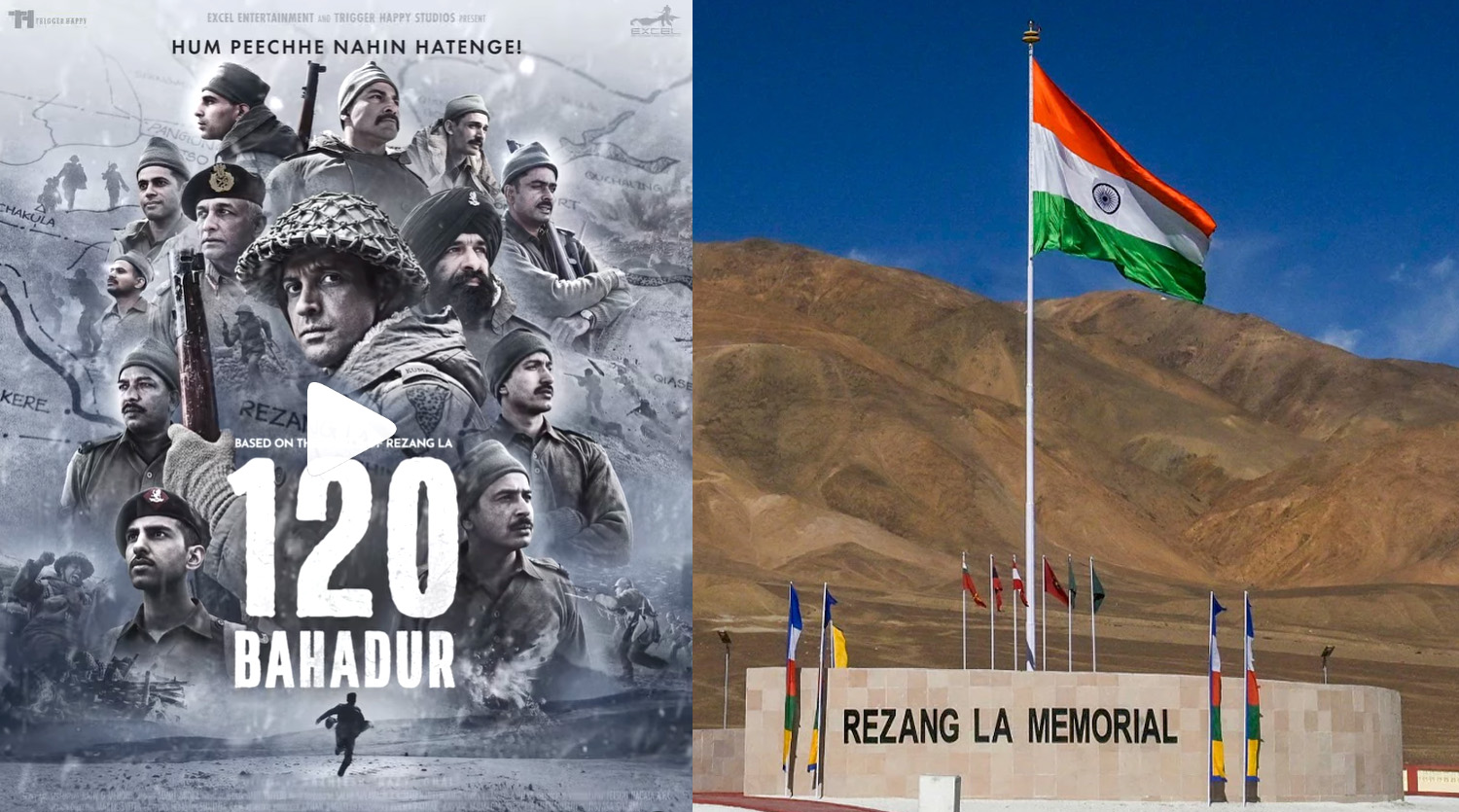


Recently, actor-producer Farhan Akhtar’s upcoming film “120 Bahadur” got embroiled in a major controversy. On Sunday (October 26, 2025), hundreds of members of the Ahir community took out a massive protest march on NH-48 against the film. The protest led by the United Ahir Regiment Front resulted in a kilometre-long traffic jam.
Protesters believe the film’s title, ‘120 Bahadur,’ does not accurately portray the sacrifice and unique identity of these 120 brave Ahir soldiers. The movie is based on the Battle of Rezang La Pass in Ladakh, a legendary saga from the 1962 India-China War. In this battle, 120 Ahir soldiers of ‘C’ Company of the 13th Kumaon Regiment displayed extraordinary bravery and risked their lives.
The protestors are demanding that the movie’s name be changed to “120 Veer Ahir” to accurately reflect the community’s unique contributions. They threatened that it the name of the movie is not changed, they would not allow the film to be released in all states, including Haryana, where majority of the Ahir community resides. The movie and this protest has once again brought the historical and emotional story of Rezang La into national focus.
India-China War 1962: Strategic Importance of Rezang La
The 1962 Sino-Indian War is a painful chapter in Indian history, but the Battle of Rezang La emerged as a symbol of the Indian Army’s indomitable courage and valour. The roots of this conflict began to grow in 1961 when India faced a threat to its territorial integrity because of Chinese encroachments, especially after China started building a strategic road through Indian territory, connecting Xinjiang and Tibet.
To counter this situation, then-Prime Minister Nehru made a decision, which came to be known as the “Forward Policy”. Nehru instructed the Indian Army to establish and hold small outposts along the disputed border, including at positions right across the Chinese positions. This policy led to an escalation of tensions along the border. China, under the guise of the diplomatic slogan “Hindi-Chini Bhai-Bhai”, was rapidly building up its military strength. Finally, on October 20, 1962, the tension at the border escalated into a full-blown war when China launched a simultaneous devastating attack on several Indian posts.
Leh’s last defense wall
By November 1962, the Indian Army had retreated to Leh, the capital of Ladakh. All preparations were now focused on defending Leh. The most important point for Leh’s defense was Rezang La. Rezang La was no ordinary place. It was a pass located at a very high mountain at an altitude of approximately 18,000 feet (about 5,500 meters).

This pass protected the Chushul Valley. If China had reached the Chushul Valley, the route to Leh would have been open. Therefore, crossing Rezang La was crucial for China, and for India, securing this pass at all costs was the final and most important challenge.
Defenders of Rezang La: The 120 warriors of ‘Charlie Company’
The challenging task of defending Rezang La was entrusted to ‘Charlie Company’ of the 13th Kumaon Regiment, under the command of Major Shaitan Singh Bhati. The company consisted of 120 brave soldiers, most of whom belonged to the Ahir (Yadav) community of Haryana. They had very little equipment to fight the battle: old rifles and mortars, but their greatest strength was an unwavering determination not to surrender. These soldiers were prepared to face this extremely difficult challenge.
November 18, 1962: The snowy night when the Chinese attacked
It was around 3:00 a.m. on the morning of November 18, 1962. Cold winds were blowing, and the temperature was minus 25 degree centigrade. Lance Naik Hukum Singh and four soldiers were stationed at a small listening post. Through the dense fog, they spotted hundreds of Chinese soldiers stealthily moving up the hill.
The Chinese were marching in thousands, supported by their heavy mortars. Hukum Singh’s brave soldiers immediately reported this to their main company. Hukum Singh knew he was facing hundreds of enemies, yet he refused to retreat. Hukum Singh said, “The longer we hold off the enemy and kill them, the better chance our company has of winning”. As soon as Hukum Singh gave the order, their guns began to fire. The first line of the Chinese army was completely taken by surprise by this sudden attack.
Iron till the last breath: When soldiers fought with bare hands
As the Chinese launched a major offensive on the Indian front, Major Shaitan Singh stood firm. The enemy attacked from three sides and tried their best to surround the Charlie Company. However, the Indian soldiers responded with a heavy barrage of bullets. Naib Subedar Suraj’s 7th Platoon was attacked by around 400 Chinese soldiers. Mortar shots from the Indian troops inflicted heavy casualties on the Chinese. Nevertheless, the Chinese soldiers continued to advance, unconcerned about their fallen comrades.
At one point, some Ahir soldiers ran out of ammunition. Even then, they didn’t stop; they began fighting the enemy with their bare hands. Two soldiers even ran towards the Chinese machine gun post, but were martyred. A strong Ahir soldier grabbed a Chinese soldier, lifted him up, and threw him off the cliffs of Rezang La. Unfortunately, Naib Subedar Suraj was hit in the head by a bullet shrapnel, and he uttered “Keep fighting, keep the name of 13 Kumaon high” as he lay his life for the nation.
Commander’s Courage: Major Shaitan Singh’s Greatest Sacrifice
Even as bullets rained down all around him, Major Shaitan Singh remained steadfast. He constantly moved from one post to another. His focus was to keep the soldiers’ morale up, repair broken defenses, and ensure targetted firing at the enemy. However, he was seriously wounded in a machine gun explosion.

But Major Shaitan Singh refused to move from his position and get treatment. He ordered his men to leave him where he was and continue the fight. His last words were, “Tell the battalion how bravely the company fought”. Three months later, his body was found in the snow at the same spot. For his supreme courage, superb leadership, and the ultimate sacrifice for the country, he was posthumously awarded India’s highest gallantry award, the Param Vir Chakra.
History of Rezang La: A tale of frozen fingers on the trigger
The fierce battle of Rezang La was over by 8 a.m. In just five hours of fighting, the ‘Charlie Company’ of 13 Kumaon added a rare valorous chapter to India’s military history. All of Major Shaitan Singh’s men fought to their last breath. Out of 120 brave soldiers, 114 were martyred. Only four survived. In 1963, when the snow melted and the bodies of the soldiers were discovered, it was a shocking sight. Most of the soldiers’ bodies were found clutching their guns. They had suffered many deep wounds from bullets and bayonets.
A small Indian contingent inflicted heavy losses on the Chinese. According to Major General Jagjit Singh, about 500 Chinese soldiers were killed. The battle exhibited an example of the grit and determination of Indian soldiers. The Battle of Rezang La remains a symbol of indomitable courage for the country till day.
The Pride of Rezang La: Salute to the Martyrs
The Battle of Rezang La is one of the shining examples of courage in the country’s history. A war memorial has been built at Rezang La to honor the supreme sacrifice of these martyrs. On November 18, 2021, which marked the 59th anniversary of the battle, the memorial was renovated and inaugurated by the country’s Defense Minister. The memorial continues to narrate the story of the sacrifice of 120 brave Ahir soldiers and the unmatched courage of the Indian Army.
(The article is a translation of the original article published on OpIndia Hindi.)



